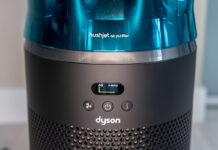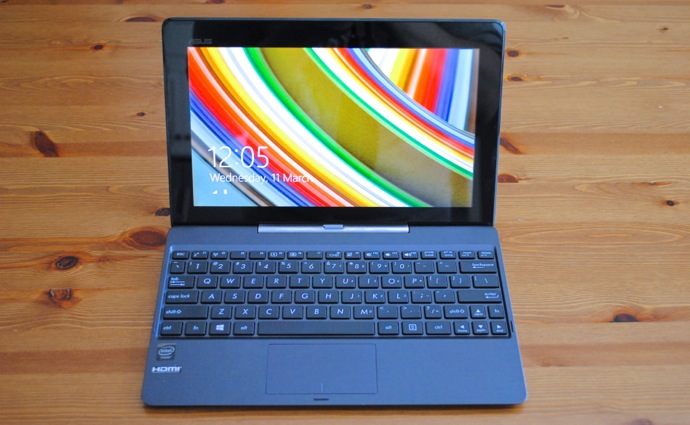
When it comes to tablets that convert to a laptop and back, ASUS was early to the game with its Transformer Book series. They combine a standalone tablet with a dock-able keyboard cover offering the best of both worlds. The first Transformer Books were Android only, but with the T100, the Transformer Book joined the Windows 8.1 camp. I recently spend a few weeks with one and came away convinced it’s not a bad little device for the price.
Transformer Book T100 Specs
|
Initial Impression
When I first pulled the Transformer Book T100 out of its packaging, it struck me as an interesting looking device.
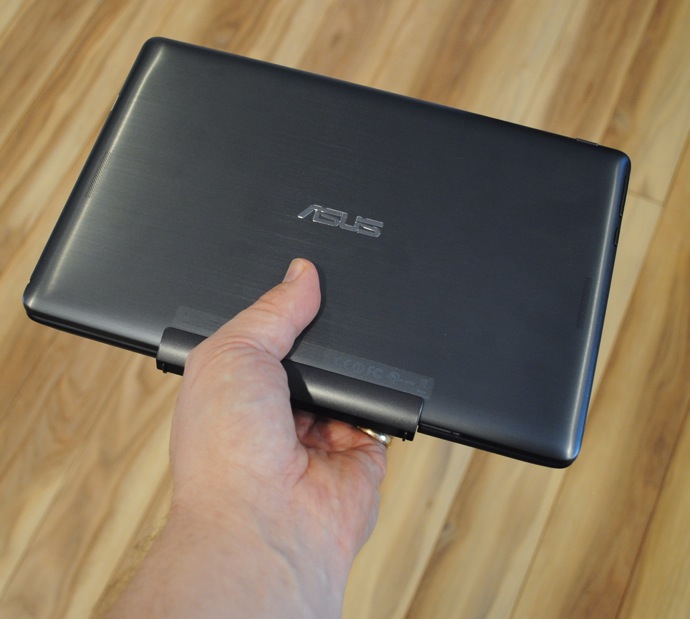
While it’s not particularly thick for a laptop (2.5 cm) the T100 looks a little pudgier than it is, probably because it’s not as wide or as deep as a typical laptop. With a display of just 10.1-inches, it’s smaller than most ultrabooks. At just 1.1kg, it’s lighter too. There’s a lot of plastic here, but ASUS uses a brushed effect to minimize smudges and keep it from looking cheap.

Open it up and the T100 falls somewhere between a typical laptop and a netbook in size. I frequently use an iPad Mini mounted in a ZAGG keyboard case and when I put the two side by side, you can see it’s a somewhat similar effect. The T100’s connection between the display and keyboard is much more solid, though (it uses a mechanical release instead of magnets) and it’s physically larger.
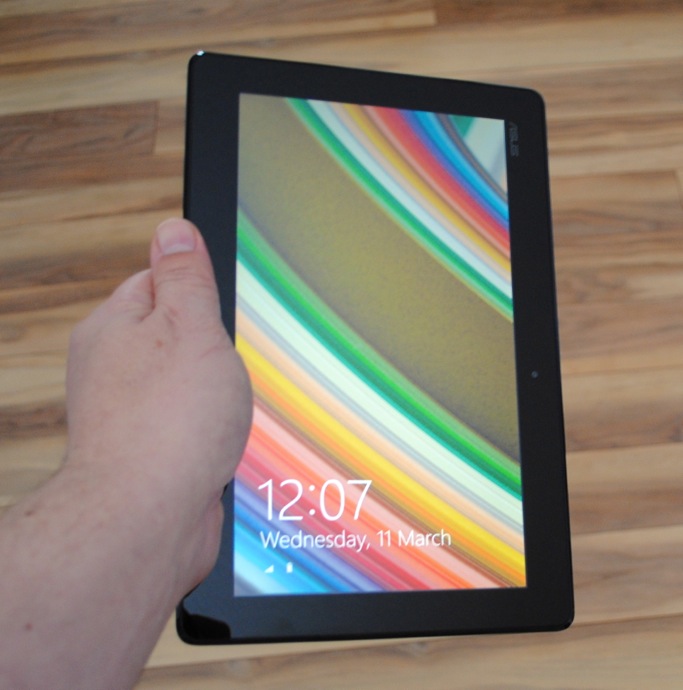 As a Tablet
As a Tablet
One of the great things about the T100 is that it transforms (thus the name) into standalone Windows 8.1 tablet. There’s no flipping around of the keyboard to the back as with many convertible laptops, the keyboard physically detaches. This leaves you with a 10.1-inch tablet running Windows. As far as tablets go, it’s a little thicker and heavier than average, but it needs some decent hardware inside to power Windows—a reasonable tradeoff in my books.
And it behaved perfectly well. The aspect ratio is 16:9 (think wide and thin), a choice I’ve never been a fan of in tablets, primarily because they become quite awkward to hold in portrait mode. Fortunately, the T100 is small enough that the clumsiness of that aspect ratio doesn’t come into play so much. If you hold it in portrait mode to surf the web, you’ll still have a lot of downward scrolling through content to deal with, though.
The display resolution is not spectacular. At 1366 x 768, that works out to a pixel density of 155 ppi (pixels per inch); in comparison, the Nexus 9’s display is 287 ppi and my iPad Mini 2’s is 326 ppi. The T100’s display is not terrible, but text isn’t nearly as crisp as on many other tablets and watching videos means sticking to a maximum of 720p.
If it’s being used by a child, you can take advnatage of Microsoft’s Family Satefy tool—part of Windows 8—for increased cyber safety. This is a nice feature to have on any tablet and with the T100, those same rules carry over into its use a laptop.
As a Laptop
In my experience there are several typical reactions to a laptop this tiny, with such a compact keyboard:
- Some people love it
- Some people hate it
- Some people feel it’s a compromise but they can live with it
I’m in that third camp. The keyboard is solid enough (that’s a big deal with portable keyboards—some of them flex) and the chiclet-style keys have some travel, but they’re small and very close together. I’m accustomed to using many keyboards during the course of a typical day (in fact, you can see just a few of them in my ) and one of those is the tiny ZAGG Folio case, which is even smaller than the T100’s. I can deal with small, although I wouldn’t want to hammer out a novel on this laptop.
I wasn’t particularly fond of the T100’s trackpad, but hey, at least it has one!
Going back to my original premise, there will be some people—probably those with smaller hands—who can fly on this keyboard. A lot of people are going to hate it. They’ll be miserably mashing the keys. They probably hated netbooks too.
In fairness, the Transformer Book T100 is larger than most netbooks were, but it’s definitely on the small side for a laptop. It’s equipped with Windows 8.1 and basic tasks are smooth enough. Navigation, opening a web browser and typing a document are snappy. However, this is a two year-old CPU powering the T100 and it has on 2GB of RAM at its disposal, so don’t expect to running Photoshop on this convertible laptop. Actually, with a display of this size and resolution, you wouldn’t want to be doing that anyway. Gaming is out too, at least anything but the most casual games.
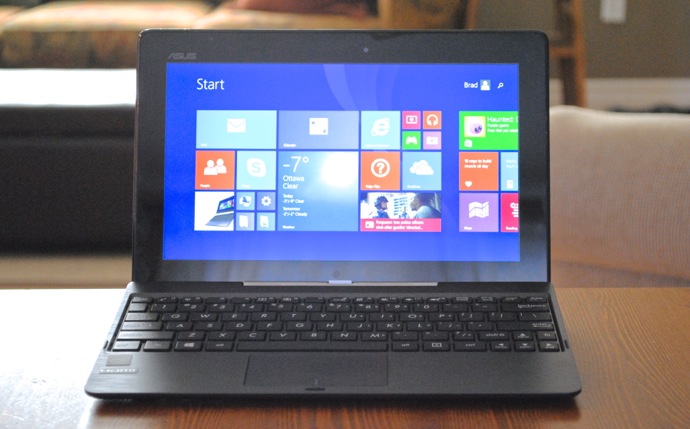
Battery life was very good for laptop, and about average for a tablet. ASUS rates the T100’s battery at up to 11 hours. What I saw was closer to nine hours. Nothing to complain about there.
One other technical issue to be aware of given that the T100 is no longer a cutting edge offering; it lacks 802.11ac Wi-Fi. That means no Gigabit Wi-Fi browsing, assuming you have a newer wireless router.
It’s a perfectly capable little Windows laptop, but definitely not aimed at the power user.

Bottom Line
If you’re in the market for a tablet/keyboard combo, a device that essentially fills the niche left vacant by netbooks, or an alternative to a Chromebook, the ASUS Transformer Book T100 is worth considering. It’s getting a little long in the tooth, but it runs Windows 8.1, offers good battery life and you end up with a Windows tablet and a detachable keyboard for a lot less than you would pay for many tablets on their own. If you’re holding out for something a little sleeker with a more modern CPU, keep an eye out for the T100 Chi, a 2015 CES award winner.


